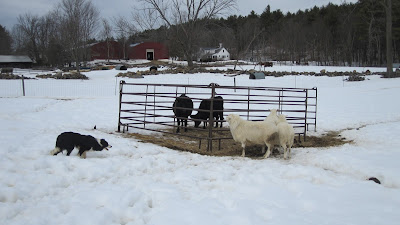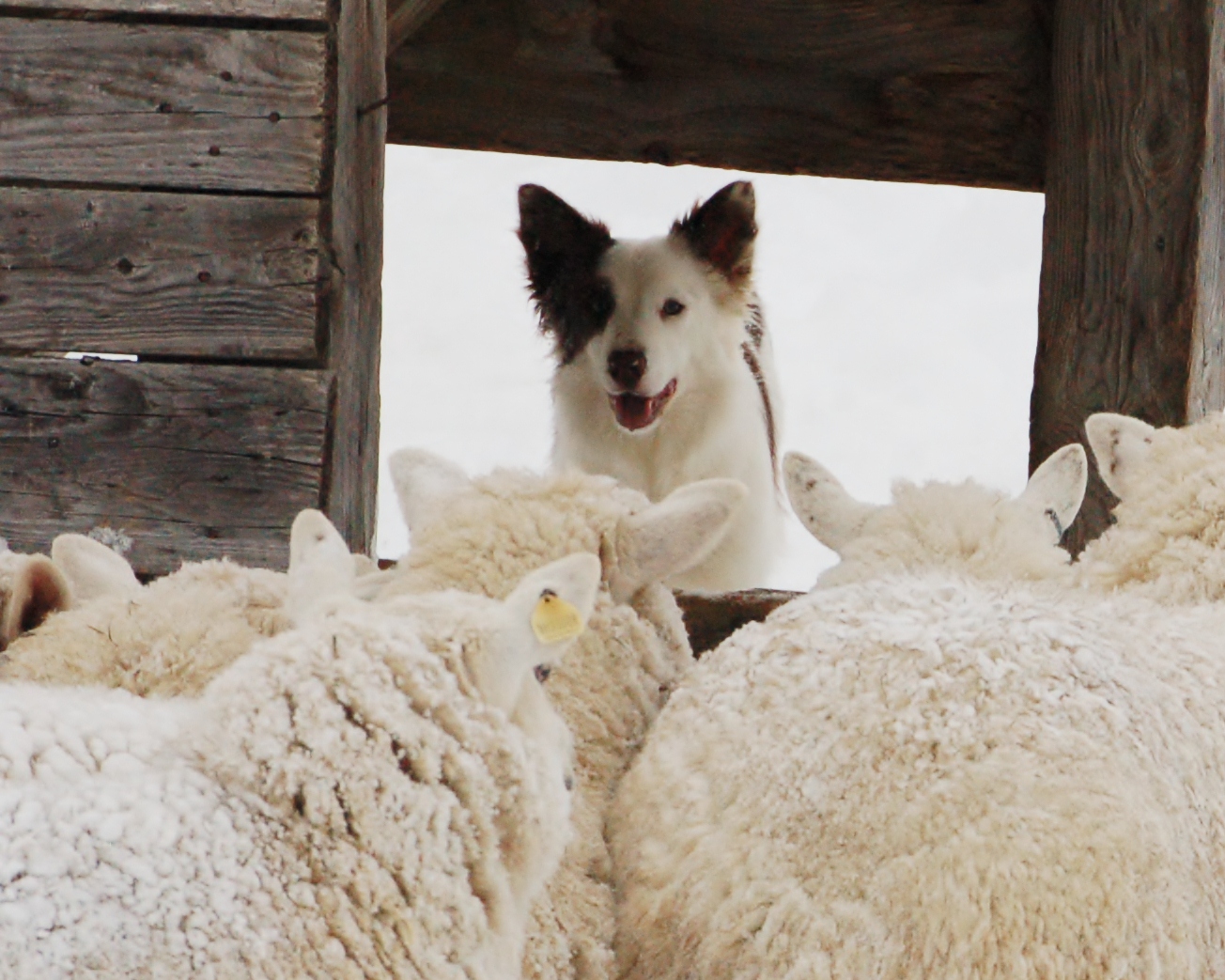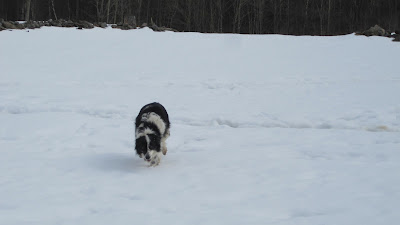Wicked Good Stock Dogs
A Memoir of Border Collies and Other Working Stockdogs, by Cindi Hayden
Friday, March 15, 2013
Call Your Dog Off the Beaten Path
Have you ever followed a deer or moose trail winding through field or forest? These trails, very noticeable in snow but less so during other seasons, are used for survival; they provide security. Trails are usually a path of least resistance towards a desired destination such as water, food, shelter, animals of kind, comfort or safe ground. Much of our livestock also make favorite trails or paths. Paths made by sheep, cattle and goats, to name a few, are not usually straight. Flocks and herds like to keep sight of each other and of what is behind them. Curves in the path allow them to do so. Paths are also known ground where animals are confident to move at a faster pace, with less risk to legs and feet. Protecting limbs is instinctual.
click on pictures to enlarge
Cattle and sheep have made the paths in the snow. Throughout the year, a good eye will see the that paths remain in use.

Herding dogs, unless trained otherwise, are also likely to follow the path of least resistance. For purpose of example, I sent Border Collie, Nibs, to fetch a cow that was on a path heading away from us . I did not give a left or right flank command so Nibs followed the path of least resistance, pushing the cow further away. If I had allowed Nibs to continue, the cow would have sped up. Most likely a race to the head to turn the cow back, using force, would ensue.The opportunity for quiet calm control had passed.

Next, I called Nibs off. Again, since I had not ask for a flank, she follows the path. Following a path is a common default which can turn into a tenfold training problem in herding.
Many dogs will resort to using paths, during all seasons, if they are not trained otherwise.
One way to begin teaching your dog to come off a path is to
make it fun or enjoyable for them. When your dog is on a path, position
yourself parallel to the dog and about thirty feet away. Some dogs will dive
right in and come to you while others will search along the path for an easier
way. Stop the dog, say “there”, meaning there is the spot where I want you to
turn. Call the dog in. Praise the dog.

Once your dog is confident running through uncharted ground, you can direct him off the path to gather livestock. As he is going down a path, stop the dog , say "there", "away to me" or "there", "come bye". Later in training you will be able to drop the stop and "there" commands. Directional commands alone, "come bye" or "away to me", will pull the dog off the path.

As the dog's training advances, allow him (your choice, not default) to follow livestock down a path. Give him a directional command to go fetch other livestock.
Off the Beaten Path
In this photo, Border Collie, Griz , is pressuring a trio of sheep to go to a pen at the bottom of the small hill.

The sheep took the path or least resistance, away from the dog and down a well worn path to the pen.

The sheep had followed the path on the right, just behind them. I allowed Griz to follow the sheep until they were committed to go to the pen. I then said "come bye" and "there" to put him in position to push the sheep to the gate. Responding to "there" was critical in not only positioning correctly to influence the sheep; f he had over flanked, he could have pressured the cattle and they would have left the pen.

Once the sheep were at the head of the gate, they were not keen on going into the pen with the cattle. I swung Griz around with "away to me" and then "there" when he was aligned with the sheep and gate. A dog with less experience would have wanted to use the paths. Correct positioning would not have been easy, if at all possible.

With confidence of being comfortable in the environment, Griz guided the sheep into the pen without disturbing the cattle.
I hope this inspired you to have some fun training with your dog in the snow!
Subscribe to:
Posts (Atom)



